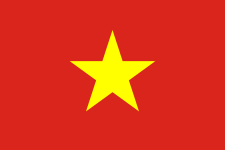Thai players get set for circular economy in Vietnam
Using international experiences, lots of Thailand’s large enterprises have joined more in Vietnam’s projects based on circular economy model.




Using international experiences, lots of Thailand’s large enterprises have joined more in Vietnam’s projects based on circular economy model.
Consensus include pressing plans to establish Thailand’s first collaborating consortium for net-zero innovation development. This seeks to pool know-how, technologies from international parties and is expected to roll on by the end of this year.
For 2021, Siam Cement Group (SCG) in Vietnam reported revenue from sales of over $1,500 million, which is a 32 per cent increase year on year mainly from sales from new acquisition of Packaging, VKPC operation and chemicals operation (TPCVINA), as well as export sales from Thailand and ASEAN to Vietnam.
Having joined hands with the world's top corporations in different fields, combined with 30 years of experience in industrial real estate developments in Thailand, Laos, and Myanmar, AMATA is increasing its presence in the world with breakthrough projects.
Thai Vietjet has inaugurated its maiden flight from capital city of Bangkok (Suvarnabhumi Airport) to Nakhon Si Thammarat, an administrative center of southern Thailand and one of the most ancient cities of the country.
Thailand’s Gulf Energy Development PCL has affirmed its $200 million investment to acquire 100% shares in two wind power plants in Vietnam, namely Ia Pech 1 and Ia Pech 2.
Leveraging technology to create products, or rather experiences, for customers is a way for many firms to move on to the experience economy – the very next economy that follow the industrial and service ones.
Vietnam’s LCY bond market is smallest in size compared to other emerging East Asia markets such as Indonesia ($217 billion), Singapore ($310 billion), Malaysia ($353 billion) and Thailand ($399 billion).
The ASEAN Hong Kong Free Trade Agreement (AHKFTA) coming into force on June 11 for Singapore, Thailand, Vietnam, Laos and Myanmar can now further promote global trade liberalisation as it adds wings to trade among ASEAN nations, according to HSBC.
In the context that foreign investors coming from South Korea and Thailand have been acquiring Vietnam’s financial companies, Japan’s Aeon does not want to set itself apart from the trend.
Having selected Vietnam as the first foreign destination in the mid-90s, when Vietnam remained unacquainted to most of the foreign enterprises, the Amata Group from Thailand has been increasing its presence at the two ends of Vietnam with billion-dollar projects.
As the stock markets of Thailand, Malaysia, Philippines or Indonesia recorded net-selling activities from foreign investors, Vietnam’s market has still shown positive signs.
Vietnamese people’s friendliness and tourist safety are the highlighted advantages to develop tourism in Hanoi’s hinterland, according to Amorn Harnkham, regional director of Thailand International College of Hospitality Education.
Automobiles imported to Vietnam last week were mostly manufactured in Thailand with 2,307 units and Indonesia with 735 units.